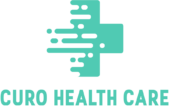Millions of Americans live with chronic back pain. It causes them to limit their physical activities, lose sleep and miss work. In fact, back pain is one of the primary reasons people give for missing work. Millions of dollars are spent each year on medications to manage back pain, but most do very little to address the root causes of the pain.

Of course, many factors contribute to back pain, such as muscle and ligament strains, our age, disc herniation, nerve damage, heavy lifting, sports and other high-impact activities, degenerative joint disease, and spinal stenosis (narrowing of the spinal canal), to name a few.
In many cases, however, back pain is linked to degenerative disc disease (DDD), a condition related to wear and tear on our discs. Located between the vertebrae in our spine, our discs are designed to provide cushion and support for our spine. As we grow older, our discs can grow thin and tear. As the discs wear down, there is increased pressure on the nerves in our back and friction between the vertebrae can trigger intense pain.
Left untreated, the negative symptoms associated with DDD and the intensity of the pain are likely to increase over time. A specialist like a back pain chiropractor in Baltimore, MD, can often recognize the early stages of DDD and start treating them before they advance too far.
Common symptoms of DDD include: constant, dull lower back pain; episodes of intense, sharp lower back pain, sometimes accompanied by bouts of numbness and tingling in the arms or legs; and experiences where the back tends to “give out” and painful muscle spasms occur.
Chiropractic care to address DDD would focus on improving the motion in your spine.
What are common chiropractic techniques to address DDD?
· Spinal Adjustments: Depending on your symptoms, your chiropractor will identify the best methods of gentle manipulation (thrusting vs. non-thrusting, etc.)
· Manual Therapies: Here the chiropractor may place pressure on specific pressure points to relieve tension, use manual joint stretching and resistance techniques, or perform a therapeutic massage to reduce muscle tension.
· Instrument-Assisted Therapies: Interferential electrical stimulation or ultrasound may be used to stimulate muscles, reduce inflammation and/or enhance circulation.
Chiropractic care is the preferred treatment option for people with DDD for many reasons. It is gentle, non-invasive and – unlike prescription drugs or back surgery – much less likely to trigger unwanted side effects. Before you encounter debilitating back pain triggered by DDD, you may want to consider visiting a chiropractor like the team at Mid-Atlantic Spinal Rehab & Chiropractic.

